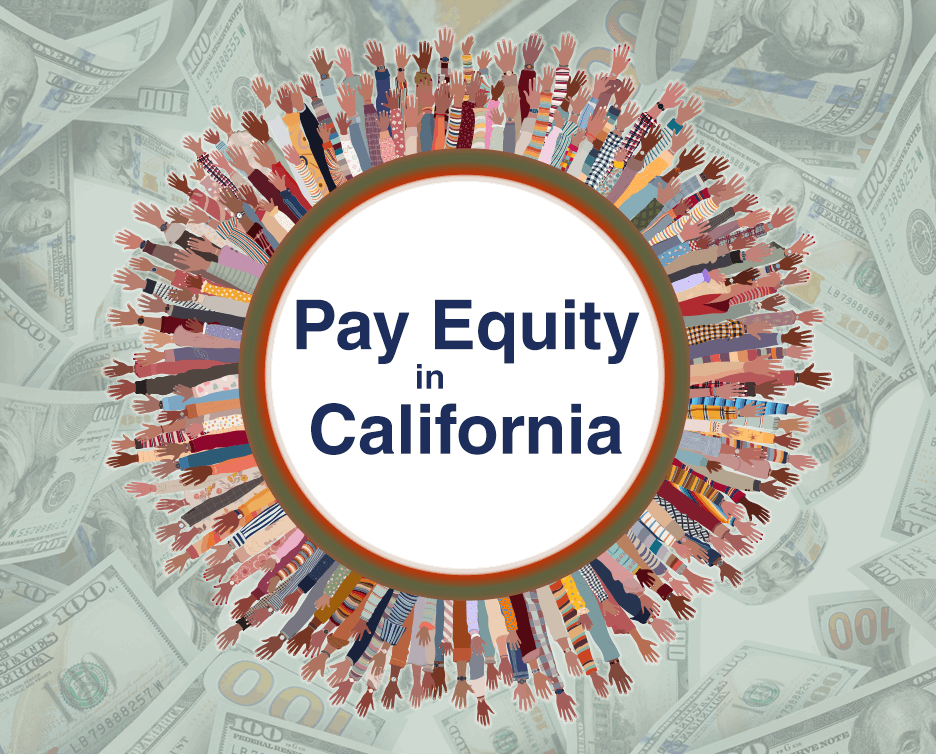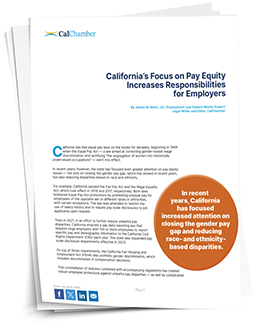
California has had equal pay laws on the books for decades, beginning in 1949 when the Equal Pay Act — a law aimed at correcting gender-based wage discrimination and rectifying “the segregation of women into historically undervalued occupations” — went into effect.
In recent years, however, the state has focused even greater attention on pay equity issues — not only on closing the gender pay gap, which has slowed in recent years, but also reducing disparities based on race and ethnicity.
Download CalChamber's free "California’s Focus on Equal Pay Increases Responsibilities for Employers" white paper for details on the constellation of statutes and their accompanying regulations (including not only the basic equal pay law framework, but also the recent salary history restrictions, pay scale disclosures and pay data reporting requirements) that have created robust employee protections against unlawful pay disparities — all with a focus on employer compliance issues, tips and best practices.

